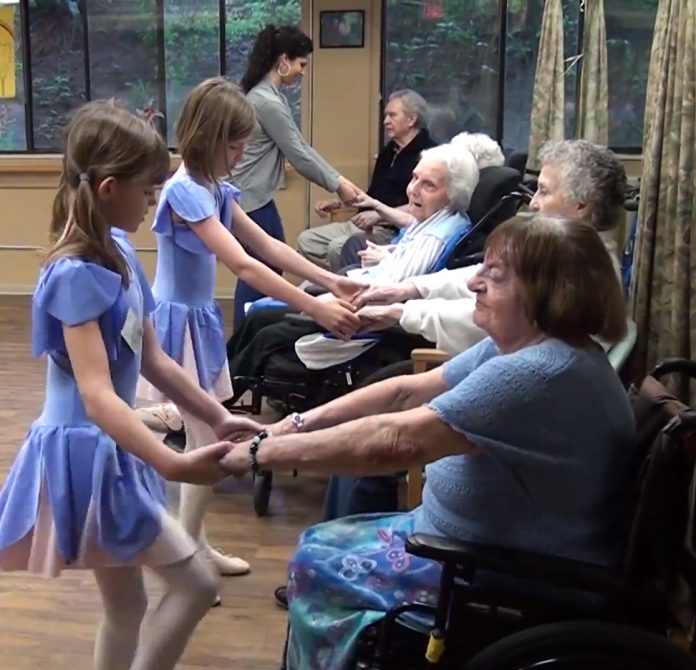by Shelly Canning and Darren Blakeborough, Research Insights on Health and Aging, 2019
The Center for Education and Research on Aging at the University of the Fraser Valley undertook a research project exploring the benefits for residents and school-aged children partnering in weekly ballet classes.
School-aged children were partnered with a group of residents living in a neighboring long-term residential care home in a weekly dance class. All of the resident participants were diagnosed with some type of dementia, with the majority of residents experiencing moderate to advanced stages of the disease.
Relationships were built between the children and residents as they became partners in the dance classes. These were relationships born of mutual goals, as during each class they had to practice the dance exercises and in order to eventually perform a dance in the final recital. The differences in their abilities became less obvious as the children began to
see the value of their resident dance partners: “Like we get together as partners and we help them . . . [and] they help us. They help us help them do better.”
Balancing the complex care needs of large numbers of residents with the economics of staffing, facilities, and resources tends to keep the focus on prioritizing
care tasks and meeting basic care needs. However, positive social impacts have been reported for people living with dementia who participate in intergenerational programs. These benefits include positive affect and attitude, improved communication, and the forming of social relationships. Benefits for the children participating in intergenerational programming include increased levels of empathy and positive views of people living with dementia, thus reducing stigma and negative stereotypes.
This study confirms how intergenerational programming can be beneficial to both older adults and kids. Nursing homes and adult day centers often have to focus on other care essentials aside from socialization. However, intergenerational programs positively impact both parties and can help combine resources to make a financially efficient program. My approach at Champion isn’t to create another facilitated intergenerational program, rather, to incorporate it into the daily interactions of the center. This way, staffing or resources don’t have to be allocated towards another intergenerational class.




